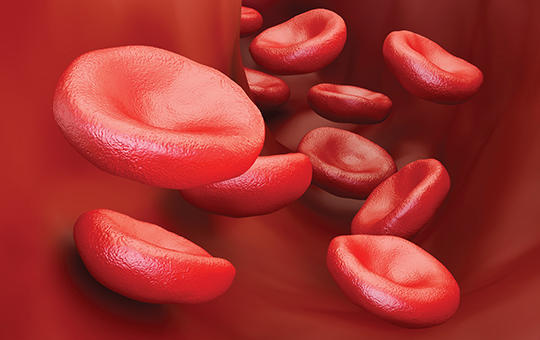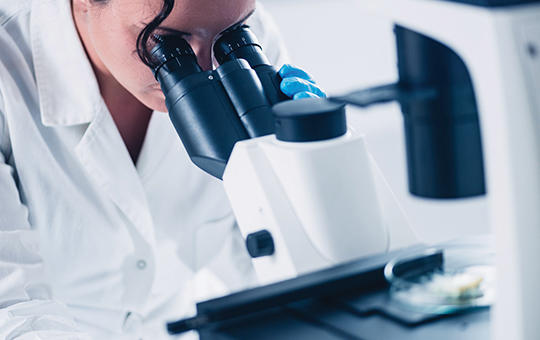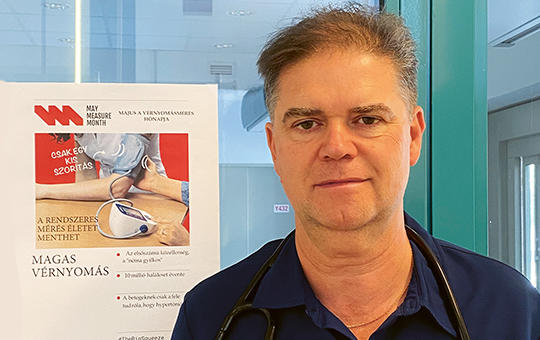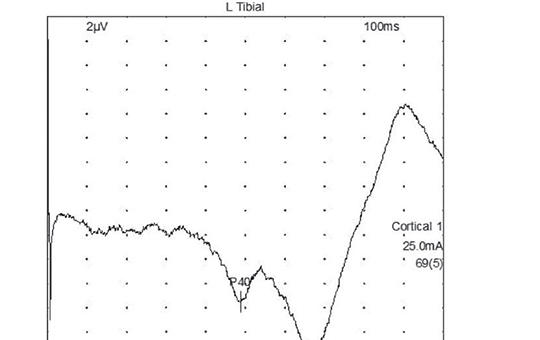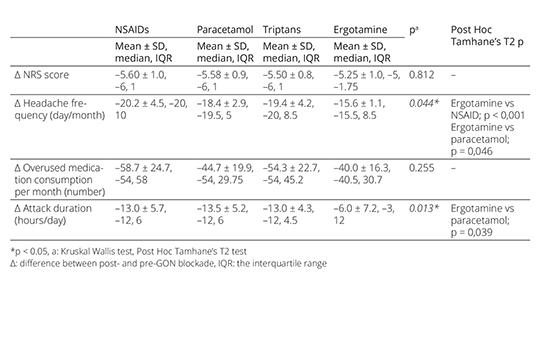The eLitMed.hu medical portal uses computer cookies for convenient operation. Detailed information can be found in the Cookie-policy.
Advanced search
You can set up what time period, journal, and metadata to search.
Number of hits: 10934
[Menorrhagia associated with anticoagulant treatment of young thromboembolic female patients ]
[Venous thromboembolism can occur also at young age and needs long-term anticoagulant treatment in specific cases. However, young women on anticoagulant therapy face special problems. One of the most common ones is an increasing and often heavy menstrual bleeding, which may result in anaemia. All anticoagulants can provoke menorrhagia and according to the available evidence, it is mostly associated with administration of activated factor X-inhibitors. Its management requires cooperation of gynaecologists and haematologists. Most cases are well controlled by adjusting the anticoagulant therapy, using hormonal therapy orally or via intrauterine device or administration of antifibrinolytic agents. However, some cases require surgical treatment. While caring for these patients, it is essential to explore the problem by taking accurate history and adequate laboratory tests, to modify the treatment and supplement the loss of iron alleviating this way the symptoms and improving the patient’s quality of life as well. ]
[Medical and the life history models in clinical psychology ]
[This study presents the dual nature of the classical medical and the more flexible life history model of mental disorders in the last almost two hundred years of psychological way of thinking. One way of basic interpretations considers the mental disorders as an outcome of any kind of disturbed biological functions. Within this classification, some considerations – according to Rokitansky’s pathological doctrine – couple the mental disorders to the disorders of specific anatomical brain structures. The other way of interpretation complies with Claude Bernard’s ideas, thus mental disorders are of regulatory origin. In our days there were emerging strong evolutionary and neurobiological understandings in the biological mental pathology and the key issue is their interrelation. The other way of traditional interpreting mental disorders starts from life history and the constant interpretive work of humans. Our symptoms are based on special meaning and valance having attributed to life events. As a mainstream in this regard, this study presents the works of Sigmund Freud and Karl Jaspers. The conclusion is that biological ad life history interpretations must cooperate for understanding of mental disorders. ]
[Artificial intelligence in life science education: opportunities and risks ]
[This study concerns the development of artificial intelligence and deep learning from the perspective of applications in medical and life sciences. It highlights that the increasing amount of health data and advances in computing technology have facilitated the spread of artificial intelligence in medicine and it is now part of the day-to-day medical practice. Artificial intelligence has proven to be an effective tool in medical diagnostics, such as imaging and patient care, improving diagnostic accuracy and efficiency. The rapidly growing medical knowledge and the need to apply new technologies make it essential to integrate artificial intelligence into the whole system of life science education. Artificial intelligence can assist in career pick, choosing of specialization, and the entire educational process (acquisition of knowledge and skills development), including personalized forms of assessment. This study draws also attention to the ethical issues and challenges related to the use of artificial intelligence in health education. ]
[Post-stroke spasticity – What to do with it? ]
[The aim of this review is to raise awareness of spasticity in primary care and outpatient settings, since we can provide this way coordinated support to those affected. As the pathomechanism of spasticity is not cleared in all details, the choice of right treatment modalities with different levels of evidence is challenging not only for GPs but also for neurologists and rehabilitation specialists. Poststroke spasticity (PSS) should be considered as a chronic condition that needs continuous follow-up and care. Its therapeutic principles have changed over the last decade. Complex care consists of interdependent elements and only the right use of which provides a better quality of life. These elements are available in Hungary too, but more organised and conscious care should be applied. Primary care workers (doctors, medical assistants, physiotherapists, caregivers, nurses) play an important role in recognising spasticity itself and its negative impact on bodily functions, and in identifying and treating the underlying causes that increase spasticity, most of which are well manageable. Many therapeutic options of complex spasticity could be delegated to the GPs, but in the current funding system, GPs should rather be involved in recognition and choosing the patients’ right pathway. Spasticity is a very common consequence of many diseases, which affect the central nervous system, including the high stroke prevalence too. Thus, it is reasonable that as many as possible professional teams be able to recognise and treat spasticity, and refer it if needed to a centre where more experience and wider therapeutic spectrum are available. Further, it is necessary to increase the number and competence of these centres by regular professional trainings.]
[Rare medical case diagnosed by microscopy ]
[The authors present the case of a 60-year-old male patient diagnosed with underlying malignant disease, who parallel to immune and chemotherapy, developed whitish-grey crusted skin plaques on his whole body, especially on the hair scalp, extremities and trunk, accompanied by a general squamous exfoliation. The systemic chemotherapy was delayed due to progressing skin symptoms. Histopathological sampling revealed irregular epidermal ducts and mite sections, which established the diagnosis of crusted scabies. The patient’s immunosuppressed status contributed to the development of severe scabies infestation. Only by topical anti-scabies treatment, all skin manifestations regressed, and he became free of symptoms after 2 weeks. The authors draw attention to the extraordinary clinical feature of this scabies infestation and stress the effectiveness of topical only use of permethrin.]
Neuropathic pain and mood disorders in earthquake survivors with peripheral nerve injuries
Natural disasters, such as earthquakes, frequently result in mood disorders among affected individuals. It is established that neuropathic pain arising from traumatic neuropathies is also linked to mood disorders. This study investigates the influence of neuropathic pain on the development of mood disorders in earthquake survivors with peripheral nerve injuries, following the earthquake centered in Kahramanmaraş on February 6, 2023.
Lightning strike‑induced cauda equina syndrome: a case report
Peripheral nerve injuries after being struck by lightning have been documented. Here, we report a case of cauda equina syndrome induced by lightning. A 27-year-old man presented with numbness, a burning sensation in the saddle region, and increased urinary urgency after being struck by lightning. He had absent Achilles reflexes and paresthesia in the saddle region upon neurological examination, and magnetic resonance imaging of the spine was normal.
The effect of anesthetic blockade of greater occipital nerve during the withdrawal period of the medication overuse headache treatment
Discontinuation of medication still remains a key element in the treatment of medication overuse headache (MOH), but there is no consensus on the withdrawal procedure. We aimed to share the promising results of anesthetic blockade of greater occipital nerve (GON), which can be an alternative to existing treatments during the early withdrawal period of MOH treatment.
[Middle meningeal artery embolization to treat acute epidural haematoma, case report and literature review ]
[The treatment of acute epidural haematoma is surgery as soon as possible, elimination of the source of bleeding and evacuation of the haematoma. In case of small epidural haematoma, strict neurological and radiological follow-up is necessary. In a significant percentage of cases, open surgery must also be performed within a few days. In case of small epidural haematomas, embolization of the middle meningeal artery is considered as an alternative solution. We review the literature on middle meningeal artery embolization and present our first treatment. Our case report is the first European report about an acute epidural haematoma which was treated by embolization of middle meningeal artery. Our case study is the first report in which a patient was treated with both open surgery and endovascular treatment for acute epidural haematoma within a year.]
1.
Clinical Neuroscience
[Headache registry in Szeged: Experiences regarding to migraine patients]2.
Clinical Neuroscience
[The new target population of stroke awareness campaign: Kindergarten students ]3.
Clinical Neuroscience
Is there any difference in mortality rates of atrial fibrillation detected before or after ischemic stroke?4.
Clinical Neuroscience
Factors influencing the level of stigma in Parkinson’s disease in western Turkey5.
Clinical Neuroscience
[The effects of demographic and clinical factors on the severity of poststroke aphasia]1.
2.
Clinical Oncology
[Pancreatic cancer: ESMO Clinical Practice Guideline for diagnosis, treatment and follow-up]3.
Clinical Oncology
[Pharmacovigilance landscape – Lessons from the past and opportunities for future]4.
5.
